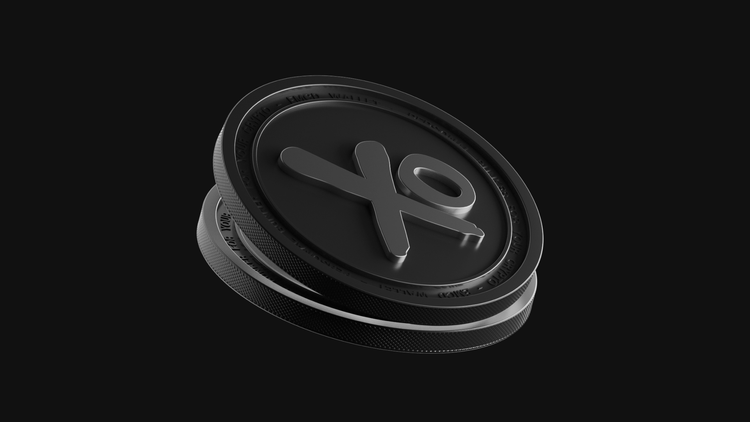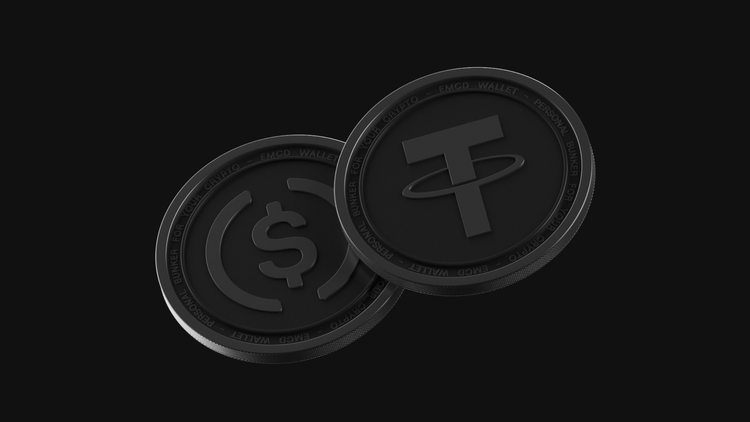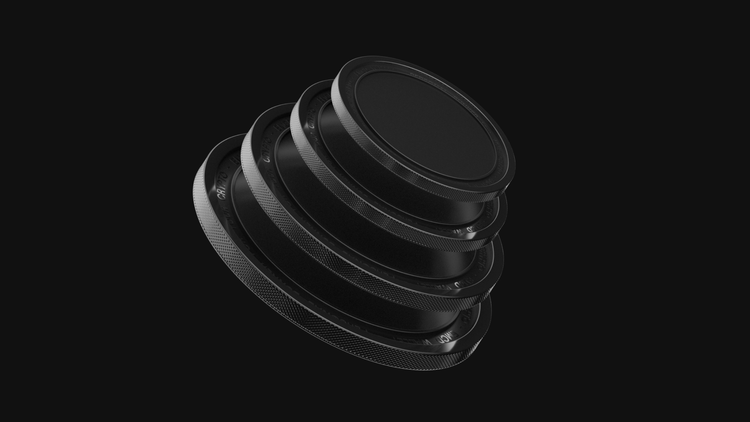What is Dual Mining? Explained with Palit GeForce RTX 4070 Dual 12GB

Dual Mining: A Smarter Way to Mine
Dual mining, or merged mining, means simultaneously mining two different coins using a single graphics card. This allows miners to increase overall profit by efficiently distributing computational resources between two algorithms.
This method became popular in 2017 when mining difficulty was rising, and coin prices were falling. Miners started exploring new approaches to maintain profitability. We'll provide information on current cryptocurrency pairs for dual mining and the features and settings for the Palit GeForce RTX 4070 Dual 12GB graphics card.
Top Cryptocurrency Pairs for Maximum Efficiency in Dual Mining
The popularity of various pairs for dual mining changes over time, depending on network difficulty and cryptocurrency market value. In 2017, miners often combined Ethereum mining with coins like Decred, SiaCoin, or Pascal. However, these combinations gradually lost relevance. In 2022, amid falling cryptocurrency prices, dual mining regained attention. For example, it was profitable to mine ETH along with TON for a while.
However, TON mining ceased in summer 2022, and ETH mining stopped in September 2022. Interest in dual mining was also fueled by the release of Nvidia's new line of graphics cards, which artificially reduced the hash rate of GPUs for mining using the LHR (Low Hashrate) algorithm.
As of early 2025, these dual mining setups offer optimal efficiency, allowing miners to maximize hardware utilization. The table below lists popular coin pairs, their algorithms, and key benefits.
| Primary Coin | Secondary Coin | Algorithms | Mining Benefits |
| DigiByte (DGB) | Dogecoin (DOGE) | SHA-256, Scrypt, Odocrypt (DGB) / Scrypt (DOGE) | Enables simultaneous mining on GPUs or ASICs, maximizing computational efficiency. |
| Ethereum Classic (ETC) | Kaspa (KAS) | Etchash (ETC) / kHeavyHash (KAS) | Efficient load distribution between GPU memory (ETC) and core computation (KAS). |
| Ergo (ERG) | Kaspa (KAS) | Autolykos2 (ERG) / kHeavyHash (KAS) | Balances GPU memory usage (ERG) with core computational power (KAS). |
| Alephium (ALPH) | Kaspa (KAS) | Blake3 (ALPH) / kHeavyHash (KAS) | Optimizes GPU resource utilization for efficient dual mining. |
| Litecoin (LTC) | Dogecoin (DOGE) | Scrypt (both) | Supports merged mining, allowing dual mining on the same hardware without extra power consumption. |
Mining Bitcoin with graphics cards is always unprofitable; it's better to choose alternative coins that can be exchanged for Bitcoin.
How to Start Dual Mining
It's important to understand that different resources of a graphics card are used for calculating the hashing algorithms of various coins. For example, when mining ETC with the Ethash algorithm, the main load is on the graphics card's memory, while its GPU is minimally loaded. Utilizing different GPU resources during mining opens up possibilities for simultaneously mining two or more coins.
To start dual mining, you need good software. Here are the steps to begin dual mining:
- Choose a suitable graphics card. Ensure your graphics card supports dual mining and has enough power to mine two coins simultaneously
- Install the necessary software. Download and install software that supports dual mining. One of the most popular programs for dual mining is T-Rex. It's optimized for the mining process, especially with Nvidia cards, and supports many popular algorithms. There's also LoLMiner, which is well-suited for AMD cards and successfully bypasses hash rate limitations on Nvidia cards
- Configure the miner. Set it up for simultaneous mining of the two selected coins. Specify the pool for each coin, and configure overclocking and power limit parameter
- Create wallets for each mined coin. This is necessary to receive mining income
- Monitor and optimize processes. Regularly track system performance, GPU temperature, and overall stability. Adjust settings as needed for optimal efficiency
The efficiency of dual mining depends on algorithm compatibility, hardware capabilities, and current market conditions. Be sure to conduct thorough analysis and testing before starting dual mining.
Exchanges and specialized websites provide calculators and statistics for selecting programs and coins to mine.
After downloading and launching multiple mining programs, you need to configure the .bat file for your rig (graphics cards) and the mined coins.
You can engage in dual mining solo, meaning completely autonomously, but this is unlikely to be profitable. Currently, the most profitable way to dual mine crypto is by joining one of the mining pools. Working in a pool increases the likelihood of receiving rewards.
Optimal Dual Mining Configurations
For optimal dual mining settings, you first need to overclock the graphics card appropriately. The graphics card parameters should support maximum performance and stability. You should also automate cooling processes and reduce load when the system overheats.
Crypto mining programs that allow dual mining usually come with instructions. In almost all such programs, you need to create an executable file with a .bat extension, where the main parameters of dual mining are recorded. This file contains information about the mined coins, mining pools, wallets, etc.
This process is not complicated. All you need to do is replace the variable indicators in the template file with your data.
For effective dual mining, it's recommended to make the following settings:
- Memory overclocking. Increasing memory frequency by 1000-1500 MHz can boost the hash rate when mining coins that require high memory bandwidth
- Reducing power consumption. Setting the power limit to 70-80% helps reduce power consumption and temperature without significant performance loss
- Core tuning. For some algorithms, it's useful to lower the core frequency by 200-300 MHz, making power consumption and heat generation less active
- Temperature control. Ensure adequate system cooling, keeping the GPU temperature below 70°C for stable operation
Graphics Chips Palit GeForce RTX 4070 Dual 12GB
GeForce RTX 4070 Dual graphics cards use the NVIDIA AD104 GPU on the Ada Lovelace architecture.
The GeForce RTX 4070 Dual is powered by different revisions of the AD104 GPU, offering identical performance with minor updates. The table below highlights the key variants and their specifications.
| GPU Variant | Model | Specifications & Notes |
| AD104-250-A1 | Standard RTX 4070 | 5,888 CUDA cores. |
| AD104-251-A1 | Updated Version | Identical specs to AD104-250-A1. |
Both versions have identical parameters and differ only in minor material changes that do not affect performance.
Palit GeForce RTX 4070 Dual 12GB
Palit GeForce RTX 4070 Dual 12GB is a powerful graphics card based on the NVIDIA AD104-250 GPU with Ada Lovelace architecture. It features 5888 CUDA cores, operates at a clock speed of 1920–2475 MHz, and uses 12 GB of GDDR6X memory with a 192-bit bus, providing a bandwidth of 504 GB/s.
The card's power consumption is 200W, and it requires a 1×8-pin power connector. It supports DLSS 3 technology and hardware-accelerated ray tracing, ensuring high performance in gaming and computational tasks.
Thanks to its high energy efficiency and performance, the Palit GeForce RTX 4070 Dual 12GB is suitable not only for gaming but also for dual mining, where the load can be optimally distributed between the core and memory.
The ‘Dual’ in the card's name indicates two fans that operate independently and are controlled by an intelligent cooling system. This is especially relevant compared to other lower-priced graphics cards, which often have cooling issues.
Power Consumption and Hashrate of Palit GeForce RTX 4070 Dual 12GB
The Palit GeForce RTX 4070 Dual 12GB has a nominal power consumption of 200W. Depending on the mining algorithm, overclocking, and undervolting, actual consumption can vary from 90 to 200W.
The mining efficiency of the RTX 4070 varies depending on the algorithm used. The table below provides an overview of its hashrates for different mining algorithms.
| Algorithm | Coins | Hashrate |
| Etchash | ETC, ETHW | 58–62 MH/s |
| KawPow | RVN, FLUX | 32–35 MH/s |
| KHeavyHash | KAS | 570–600 MH/s |
| Autolykos2 | ERG | 170–180 MH/s |
| Cuckatoo32 | Grin32 | 8.2–8.5 G/s |
For effective mining, it’s recommended to:
- Reduce the Power Limit to 65–75% to lower power consumption
- Select optimal memory and core frequency overclocking settings
- Use undervolting to increase energy efficiency
The RTX 4070 Dual 12GB is a balanced card for mining with good hashrate and moderate power consumption, especially on core-intensive algorithms like KHeavyHash (Kaspa) and Autolykos2 (Ergo).
Is Palit GeForce RTX 4070 Dual 12GB Suitable for Dual Mining?
Yes, the Palit GeForce RTX 4070 Dual 12GB supports dual mining with algorithms like Etchash, KawPow, KHeavyHash, Autolykos2, Octopus, and more. However, efficiency depends on:
- Hashrate. Performance is split between two algorithms
- Power consumption. Increases, requiring good cooling
- Tuning. Proper overclocking is needed for balance
- Software. Supported by T-Rex, LolMiner, NBminer, etc.
- Profitability. Depends on coin prices and electricity costs
The RTX 4070 Dual is suitable for dual mining but requires fine-tuning and power management for optimal results.
Overclocking Palit GeForce RTX 4070 Dual 12GB for Mining
A popular program for overclocking graphics cards is MSI Afterburner. The program's interface is intuitive, and the graphics card parameters can be changed by adjusting the corresponding sliders. This program allows you to regulate core and memory frequency, change voltage, and control fan speed.
Using this program, you can overclock the factory settings of GeForce RTX 4070 graphics cards by 20-30% within an hour, depending on the mined digital currency.
For ETC mining, it’s recommended to set the Core Clock to 0 and the Memory Clock to +700. Some miners, in pursuit of hashrate, set the Core Clock to +150 and the Memory Clock to +1100. However, it’s important to remember that excessive overclocking can lead to overheating and failure or slower operation of the graphics card.
For other hashing algorithms, it is recommended to set the Core Clock to +150 and the Memory Clock to +500.
To reduce power consumption, you can set the Power Limit to +75. However, this may sometimes lead to a decrease in hashrate.
It’s recommended to increase memory frequency by 1000–1500 MHz, reduce core frequency by 200–300 MHz, and set the power limit to 70–80% for optimal performance and power consumption balance.
Optimizing Dual Mining on the Palit GeForce RTX 4070 Dual 12GB: Setup & Profitability Instruction
In dual mining, the profitability of the Palit GeForce RTX 4070 Dual 12GB graphics card can significantly increase due to the simultaneous mining of two coins. This graphics card supports multiple hashing algorithms, allowing two mining processes to run in parallel.
One of the most popular combinations for dual mining is Ethereum Classic (ETC) + Kaspa (KAS). ETC uses the Etchash algorithm, while KAS operates on kHeavyHash, allowing efficient load distribution between GPU memory and core.
Let's consider an example of dual mining parameter settings on the Minerstat website, designed for mining tool automation.
Step 1. Select and Specify Mining Pool
Open the address editor and add pool addresses for each mined coin:
- ETC – Ethereum Classic
- KAS – Kaspa
You can choose different pools. The main thing is that they support the necessary mining algorithms.
Step 2. Specify Wallet Addresses
In the address editor, create tags for wallets:
- WALLET:ETC: Specify your ETC wallet
- WALLET:KAS: Specify your KAS wallet
Step 3. Choose Mining Program
Go to worker settings and choose a mining program. For RTX 4070, the following are well-suited:
- lolMiner. Supports dual mining and is optimized for Kaspa, delivering stable performance and high efficiency.
- Rigel. A newer yet powerful miner with excellent performance for ETC+KAS, making it a great choice for maximizing profitability.
Step 4. Configure Miner Settings
Set configuration values in the Advanced section:
- Specify algorithms: ETC — Etchash, KAS — kHeavyHash
- Configure power distribution percentage between algorithms (usually 70% for ETC and 30% for KAS)
- Specify pool and wallet addresses in the miner configuration file
After saving the settings, dual mining will start, and the Palit GeForce RTX 4070 Dual 12GB will begin mining ETC and KAS simultaneously, increasing overall profitability compared to solo mining.
Profitability and Payback of Palit GeForce RTX 4070 Dual 12GB
Graphics cards based on GeForce RTX 4070 chips are actively used for mining. Even in conditions of falling cryptocurrency prices on exchanges, these cards allow for profitable mining. Actual profitability may vary depending on graphics card overclocking settings, power consumption, electricity costs, and other factors.
As of March 19, 2025, the average price of the Palit GeForce RTX 4070 Dual 12GB is around $700. Depending on the chosen algorithms and market conditions, profitability ranges from $1.50 to $2.10 per day. The average payback period is 9 to 14 months.
For example, the RTX 4070 graphics card can achieve a hashrate of about 120 MH/s (ERG) with a power consumption of 160W on the Autolykos2 algorithm. At current cryptocurrency prices, daily profitability is about $1.50 per day, with a payback period of 12–14 months.
On the Etchash algorithm, the hashrate reaches 62 MH/s (ETC) with a power consumption of 150W. Under these conditions, profitability is $1.80 per day (at current rates), with a payback period of 11–13 months.
However, it’s important to note that mining profitability, exchange conditions, and cryptocurrency prices are constantly changing, which can significantly affect the payback period.
Getting the Most Out of Dual Mining
Dual mining is a more profitable way to mine coins, as it allows for nearly double the income with the same equipment costs by earning rewards in two different coins.
In dual mining, it’s important to consider that the value of the second coin can fluctuate significantly, and miners need to make timely decisions about selling it. Special websites provide templates for mining configuration and income management, as well as current rates.
Thanks to its energy-efficient architecture and high memory bandwidth, the RTX 4070 Dual 12GB is suitable for mining various cryptocurrencies, especially in dual mining mode.
F.A.Q.
How to Choose Coins for Dual Mining?
When choosing coins for dual mining, consider several key factors: algorithm compatibility, profitability, and hardware support. Also, look at new coins: their network difficulty is usually lower, allowing for more rewards.
What Programs Are Available for Dual Mining?
There are several programs available for dual mining. T-Rex Miner supports dual mining and offers flexible settings. LolMiner is one of the most popular miners and is available for Windows and Linux. HiveOS is a mining management platform that supports dual mining. TeamRedMiner is recommended for AMD cards and has high efficiency.
What Are the Disadvantages of Dual Mining?
While dual mining can increase income, it has its drawbacks. The main ones are: increased load on graphics cards and higher equipment temperatures, PC power requirements, increased power consumption, setup complexities, and mining rig malfunctions.
Why Is It Better to Choose New Coins for Dual Mining?
Choosing new coins for dual mining can be beneficial for several reasons: lower network difficulty, growth potential, and developer support. New projects often offer bonuses or loyalty programs for early miners.




